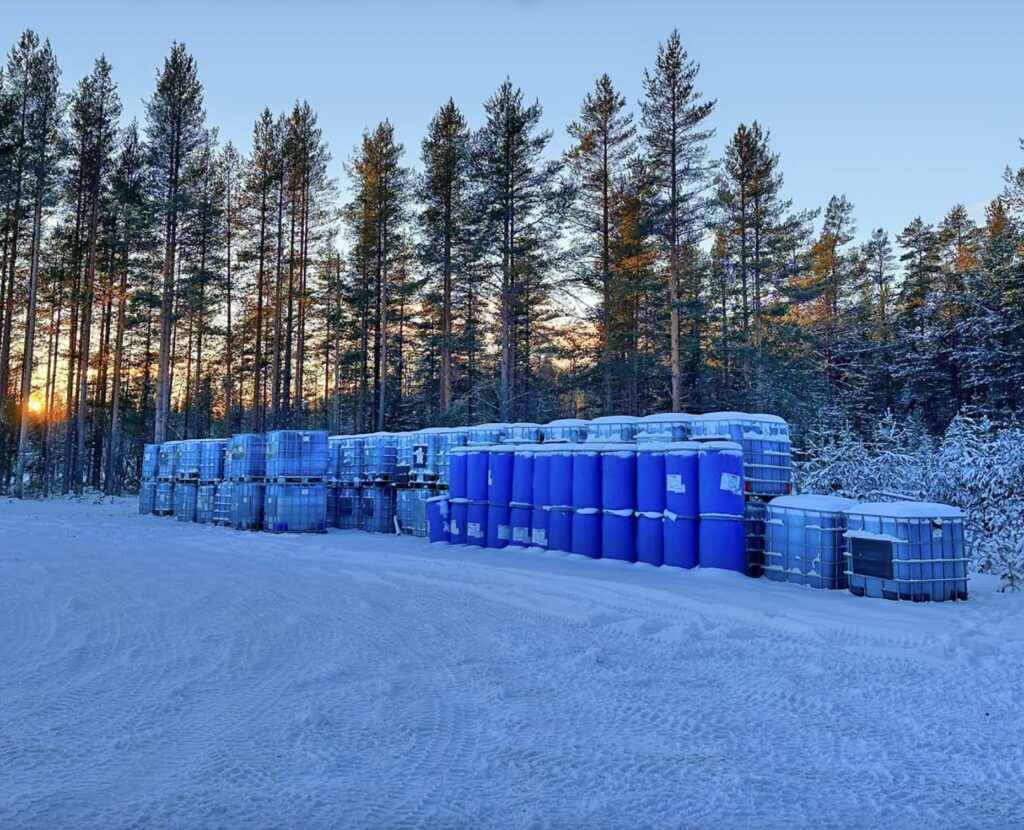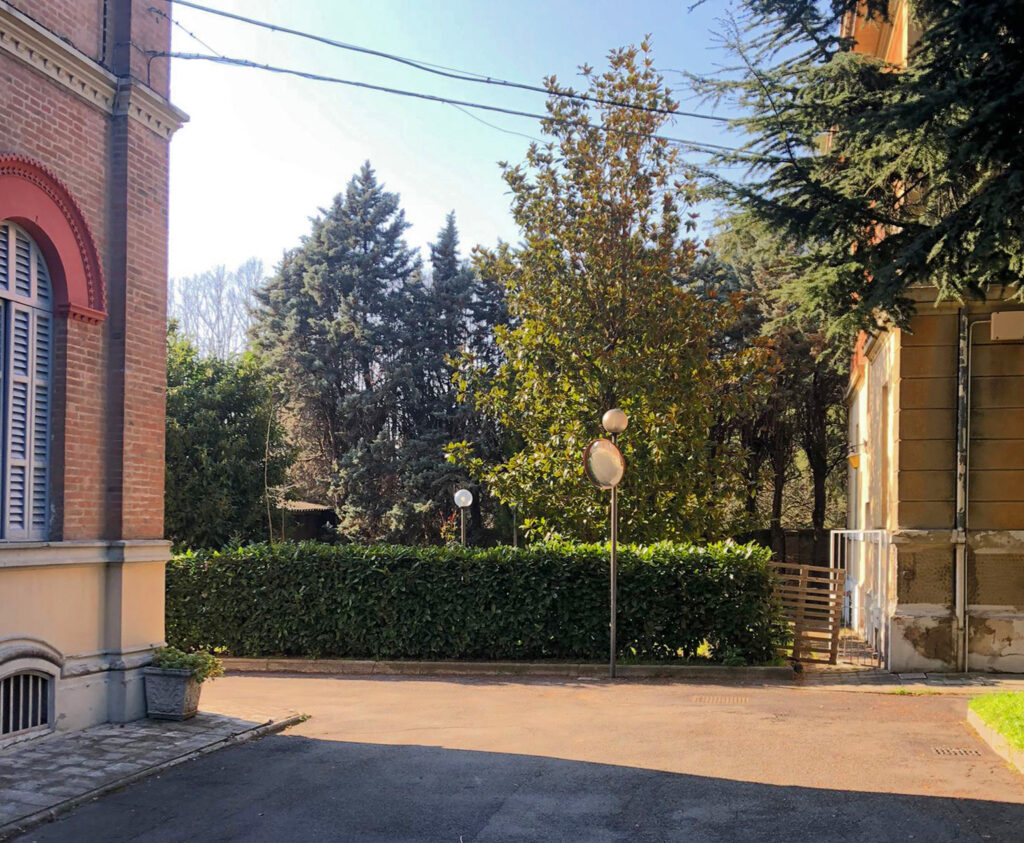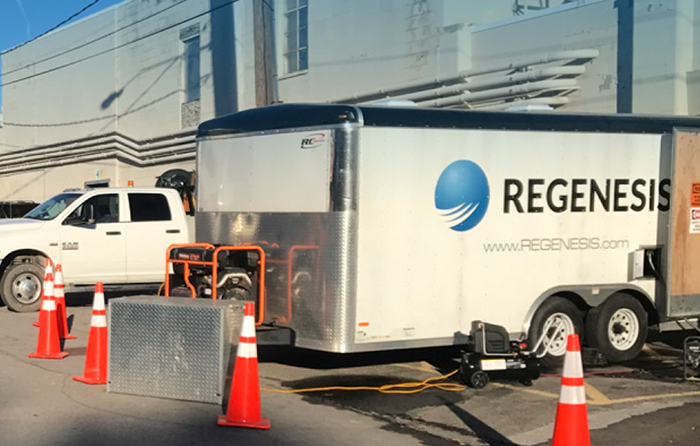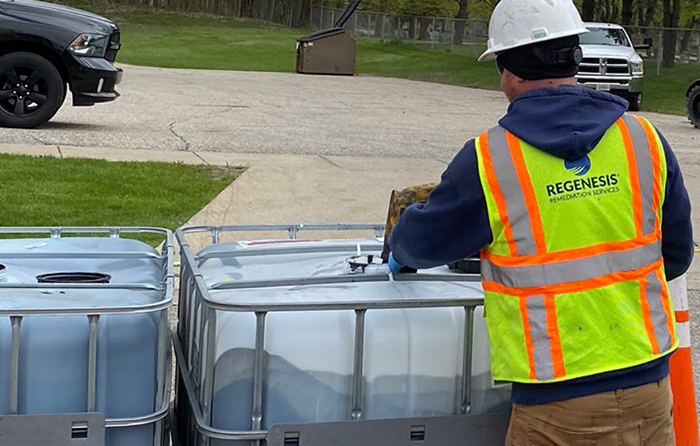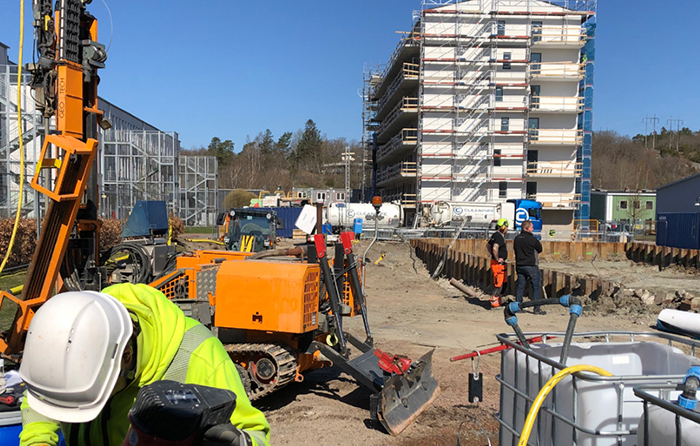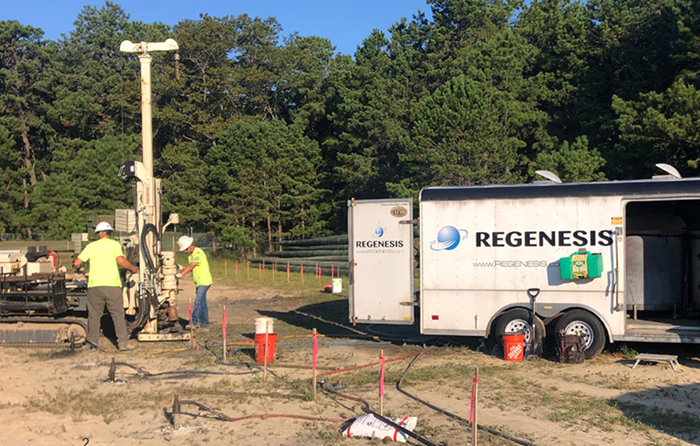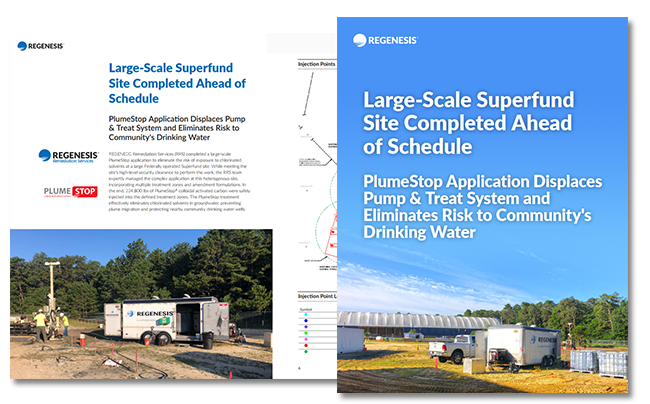PFAS Effectively Remediated at Former Naval Air Station Alameda, USA
Case Study Highlights
- >99% PFAS reductions achieved within treatment zone, within one year of implementation
- Results indicate a near-complete halt of PFAS migration into the estuary
- Site establishes a precedent for easy-to-implement, low-cost, and zero-waste PFAS remediation at military sites
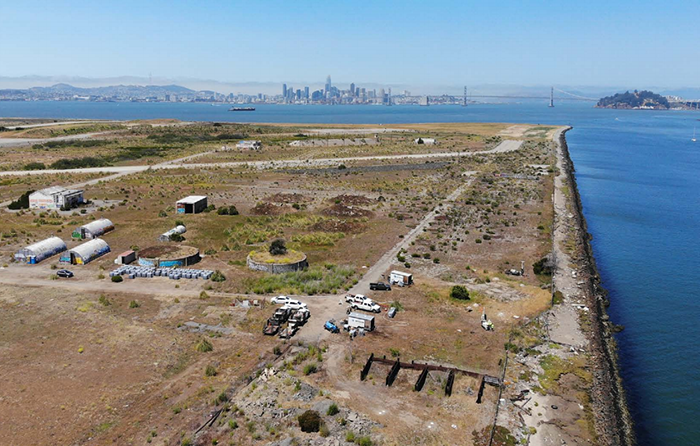
Historical firefighting activities at the former Naval Air Station (NAS) Alameda resulted in high PFAS (per- and polyfluoroalkyl substances) concentrations in the groundwater, threatening the Oakland Inner Harbor. In response, the project team, comprising Bayside Engineering, Construction, Inc. (Bayside), APTIM Federal Services (APTIM), and REGENESIS®, collaboratively implemented a 720-foot in situ permeable reactive barrier (PRB) using PlumeStop® colloidal activated carbon (CAC) technology. This innovative approach created an adsorptive barrier within the polluted aquifer, effectively capturing PFAS and preventing their migration. After one year, the target PFAS compounds were reduced by more than 99% in the treatment zone with significant decreases in the downgradient wells.
Implementing a PlumeStop Barrier for PFAS Plume Control at Örnsköldsvik Airport
This project was coordinated and led by the Geological Survey of Sweden (SGU) and Swedish Geotechnical Institute (SGI) and financed through the Government of Sweden’s Grant no. 1:4 for Remediation and Restoration of Contaminated Sites.
Case Study Highlights
-
A 70m-long PlumeStop® barrier has been successfully installed to prevent further migration of PFAS, as part of a Swedish government-funded study.
-
PFAS concentrations have been reduced by 97% to 99% downgradient of the barrier.
-
This initial-phase application, focused on the highest mass-flux section of the PFAS plume, demonstrates how offsite receptors can be protected using a zero-waste, naturally powered approach to halt PFAS migration.
-
Project delivery by Granitor Miljöteknik, supported by Geokompaniet and REGENESIS.
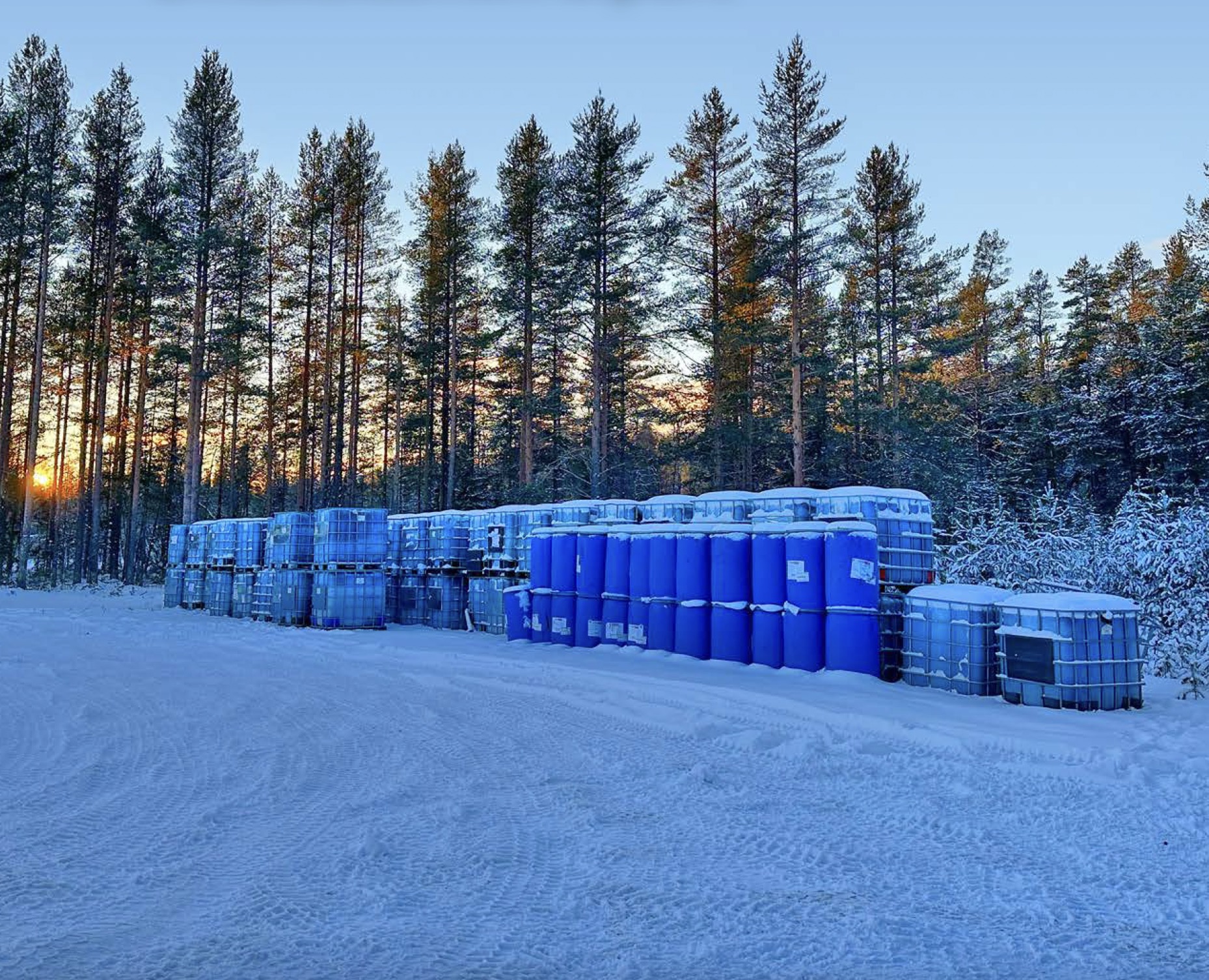
At Örnsköldsvik Airport in northeastern Sweden, significant groundwater PFAS contamination had been observed, primarily originating from a fire training ground where PFAS-containing Aqueous Film-Forming Foam (AFFF) was discharged during firefighting exercises. Groundwater samples revealed high PFAS concentrations ranging from 100,000 to 200,000 ng/L, with perfluorooctane sulfonate (PFOS) making up approximately 75% of the detected PFAS mixture.
Advanced In Situ Barrier Treatment Secures No Further Action
S-MicroZVI and PlumeStop drive multi-year ISCR treatment success, meeting stringent regulatory levels
Case Study Highlights:
-
Successful groundwater treatment for TAUW in a church oratory garden in Italy
-
PCE reduced to below regulatory target without any VC build-up, resulting in No Further Action (NFA)
-
Simultaneous remediation using advanced colloidal technologies enhanced the chemical degradation and sorption processes, optimizing treatment efficacy.
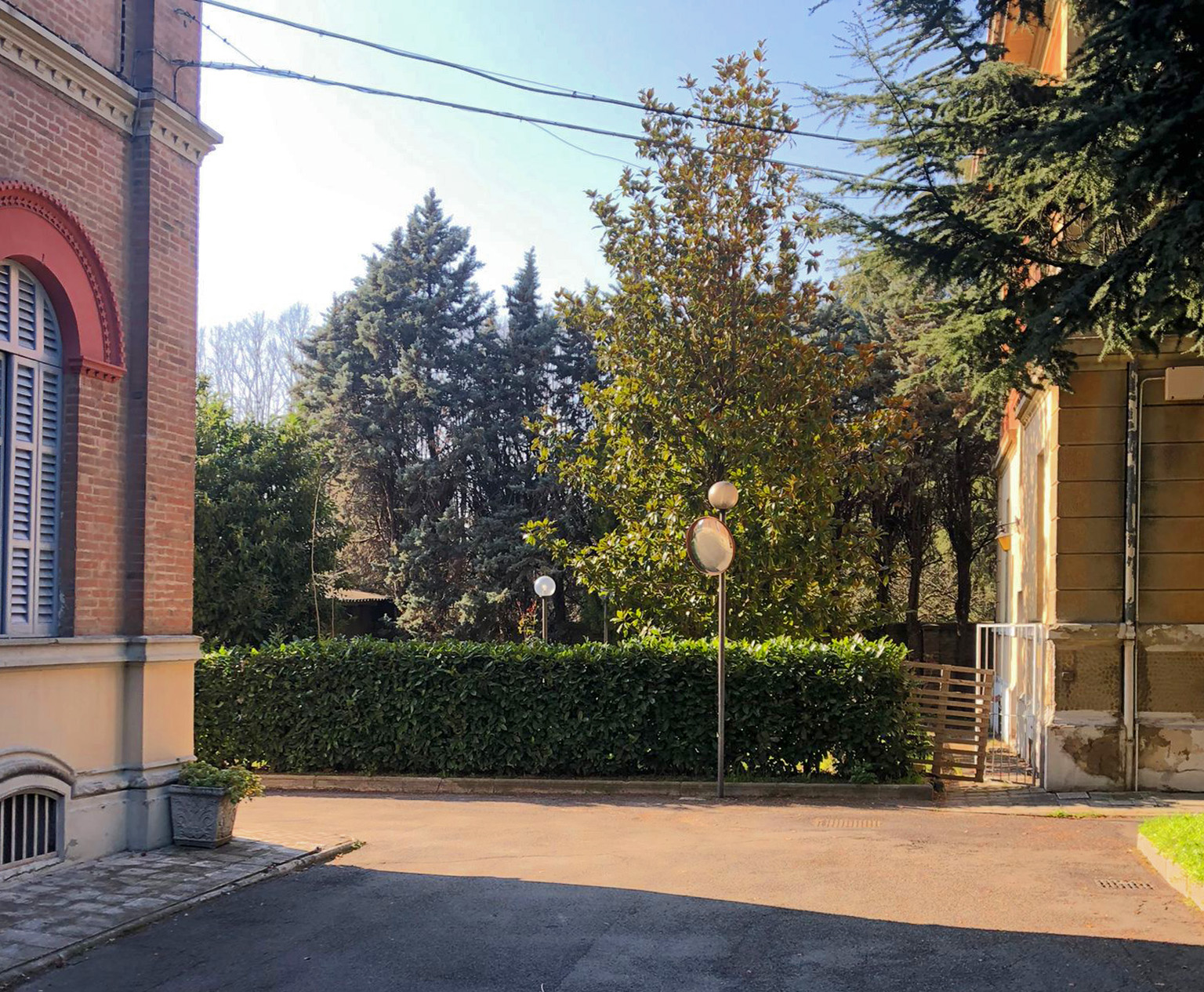
A vacant industrial site in an urban area in Northern Italy, contaminated by total petroleum hydrocarbons (TPH) from underground storage tanks, was effectively remediated using PetroFix colloidal activated carbon technology. The project required substantial and rapid reductions of TPH to allow for planned site redevelopment. Following the application, significant contamination reduction was achieved within months, meeting stringent regulatory standards. These results highlight the utility of PetroFix in complex, urban environments requiring rapid and non-disruptive remediation solutions.
New York Brownfield Site Achieves Site Closure
Case study highlights
In situ remedy replaces ex situ system and achieves PCE and TCE cleanup targets at former metals manufacturing site:
-
a PlumeStop permeable reactive barrier (PRB) replaces pump-and-treat system and achieves site closure
-
Concentrations reduced from 500 µg/L to below 1 µg/L for 6 consecutive quarters
-
Significant cost and energy savings achieved by decommissioned pump-and-treat system
7m 47s reading time
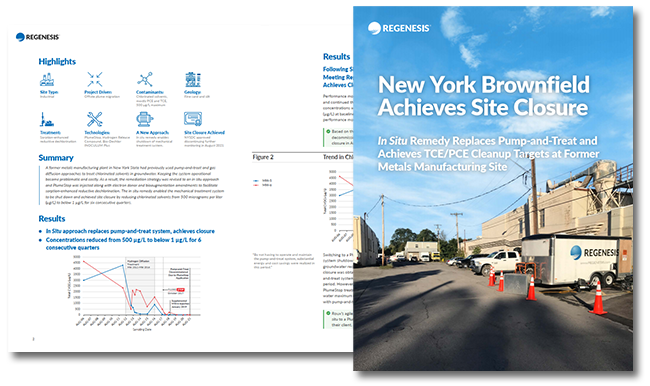
At a former metals manufacturing facility in upstate New York, historic use of chlorinated solvents had resulted in groundwater contamination with tetrachloroethene (PCE) and trichloroethene (TCE). A pump and treat system had been operational on the site for 10 years, successfully reducing contaminant concentrations, but could not reach the clean up targets required for site closure.
Benchmark, a leading engineering and redevelopment consulting company, quickly developed an in situ approach to achieve the project objectives and facilitate site closure. After evaluating remedial alternatives, Benchmark proposed a new Corrective Action Plan (CAP), specifying the in situ application of PlumeStop® (colloidal activated carbon), Hydrogen Release Compound® (HRC), a controlled-release electron donor, and Bio-Dechlor INOCULUM Plus® (BDI Plus), a bioaugmentation culture containing Dehalococcoides sp. and other beneficial microbes.
Challenging Fast-Moving, High Concentration Chlorinated Solvent Plume Effectively Treated
Case study highlights
A permeable reactive barrier installed using advanced colloidal technologies demonstrates pilot test’s effectiveness treating a fast-moving, high-concentration chlorinated solvent plume in groundwater:
-
Within a month of the application, the highest concentrations were reduced by 98 percent.
-
PlumeStop and S-MicroZVI co-injected barrier treats CVOCs for >3 years in high-mass-flux aquifer
-
Additional site design testing used passive flux samplers to better understand contaminant mass flux
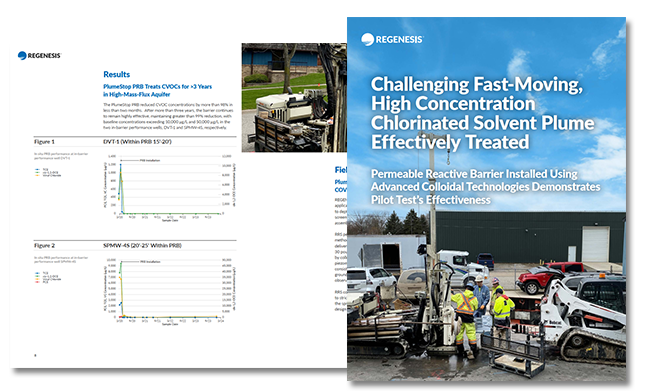
Hamp, Mathews & Associates, Inc. (HMA), working on behalf of EGLE, collaborated with REGENESIS to develop a remedial approach to address the contaminant plume. Following data review and modeling, a sorption-ERD approach was selected for implementation in a field-scale test, using the following technologies applied in an in situ permeable reactive barrier (PRB).
In this sorption-ERD approach, PlumeStop® slows the speed of contaminants (i.e., mass flux) entering a barrier, increasing the time available for the added amendments to fully reduce these contaminants into non-toxic end products such as ethene, ethane, carbon dioxide, and chloride before they leave the PRB. In combination, these remedialtechnologies create a highly reactive zone of biogeochemical reduction that can address plumes with high contaminant mass flux.
PlumeStop & S-MicroZVI Barrier Reduces Chlorinated VOCs by 95% in 1 Month
Case study highlights:
- Integrated treatment protects newly constructed residential buildings from vapour risk
- The integrated treatment approach combined in situ chemical reduction (ISCR) and sorption & biodegradation in an injected permeable reactive barrier (PRB)
- The colloidal PlumeStop® and S-MicroZVI® amendments rapidly reduced CVOC concentrations to below or near the detection levels
At an ongoing residential development in Southwest Sweden, low CVOC levels in the groundwater required a remedial solution to protect the newly constructed buildings against vapour intrusion. RGS Nordic (now: Sortera) asked REGENESIS for an in situ remediation solution.
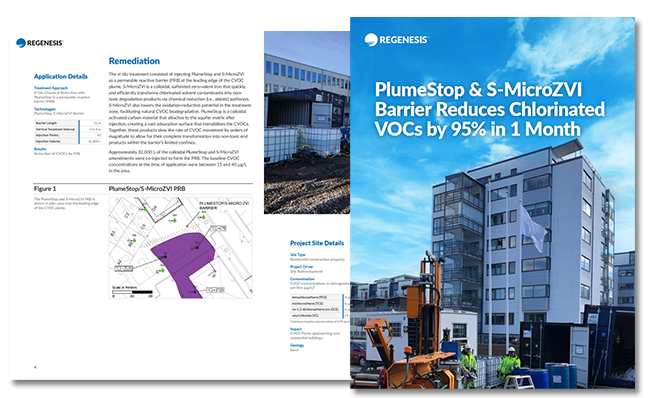
Effective In-Situ Treatment of a 1km PCE Plume in Finland
Case study highlights:
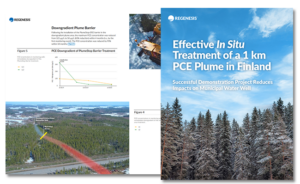 In Eastern Finland, a fast-moving PCE (perchloroethene) plume beneath a metal-processing facility was remediated to reduce impacts on a municipal drinking water source.
In Eastern Finland, a fast-moving PCE (perchloroethene) plume beneath a metal-processing facility was remediated to reduce impacts on a municipal drinking water source.
- PCE concentrations were reduced to below the drinking water limit at the municipal water supply well (concentration reductions of approximately 80% in the plume within months and 90 to 95% by 18 months)
- Results indicate that the combined treatment approach can be successfully applied in cold groundwater aquifers with low organic carbon content
- Integrated source area grid treatment (ERD) and plume barrier treatment (PlumeStop®) is an effective strategy for treating elongated chlorinated solvent plumes
Award-winning PFAS Remediation at a Private Airfield
In situ PlumeStop barrier treatment unlocks site divestment and redevelopment in England, UK
- A sustainable solution – REGENESIS and Mott MacDonald have successfully implemented a sustainable remediation solution for Per- and Polyfluoroalkyl Substances (PFAS) contamination at a private airfield in England.
- A milestone project – Remediation of PFAS impacted groundwater on this site was completed through the injection of PlumeStop to create a passive underground water filtration zone. This in situ treatment was the first of its kind in the UK.
- An award-winning collaboration – The project has won the ‘Best application of remediation technologies’ Award at the Brownfield Awards in 2023.
6m 24s reading time

Remediation of BTEX and Chlorinated Solvents at Volvo Car Gent
Long-term monitoring shows success of in situ groundwater treatment at an active car manufacturer in Belgium
Background
Volvo Car Gent is a car manufacturing facility in the port district of Ghent, in the west of Belgium. Historic handling and storage of chemicals has led the soils and groundwater below the plant becoming contaminated with Petroleum Hydrocarbons (including BTEX) and Chlorinated Solvents.REGENESIS was asked to provide a solution to treat two plumes and prevent off-site migration, whilst keeping any disruptions to Volvo Car Gent operations to an absolute minimum. Artemis Milieu and REGENESIS worked closely together with client Volvo Car Gent, to deliver the most appropriate and effective remediation solution for the site.
Case Study Highlights
- The full-scale remediation addressed two plumes in two treatment areas with cost-effective in situ barrier and grid injections
- The combined treatment approach used ISCO, Sorption & Enhanced Biodegradation as well as Aerobic and Anaerobic Biostimulation to address the contamination.
- Challenges: operational plant and restricted access
- Client quote, remediation cost and long-term result graphs included
2m 32s reading time
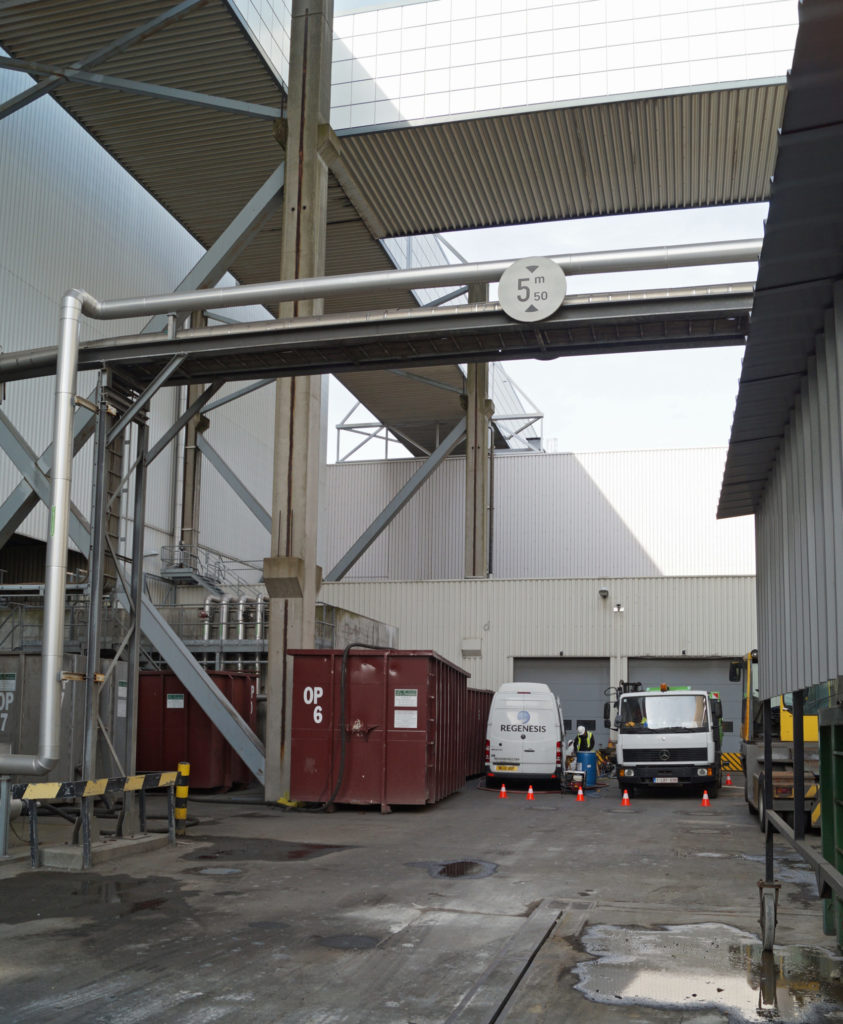
PlumeStop Treatment Allows for Shut Down of Pump & Treat System
Case study highlights:
- PlumeStop treatment prevents plume migration and protects nearby community drinking water wells
- This sustainable approach eliminates the massive carbon footprint created by outdated pump-and-treat approaches
- 224,800 lbs. of PlumeStop colloidal activated carbon were safely injected into the target treatment zones
This case study reviews a large federally operated Superfund site in the USA where REGENESIS Remediation Services (RRS) completed a large-scale PlumeStop application to eliminate the risk of exposure to chlorinated solvents. Amentum, a leading American governmental and commercial services contractor, is the responsible party’s contractor. Amentum has worked with the client at this site for years, providing oversight and management of their contracting partners. The project’s sensitive nature required an enhanced awareness of health, safety, and security issues and seamless coordination between RRS, Amentum, and their client.

 Americas
Americas Europe
Europe Français
Français Deutsch
Deutsch Italiano
Italiano Español
Español